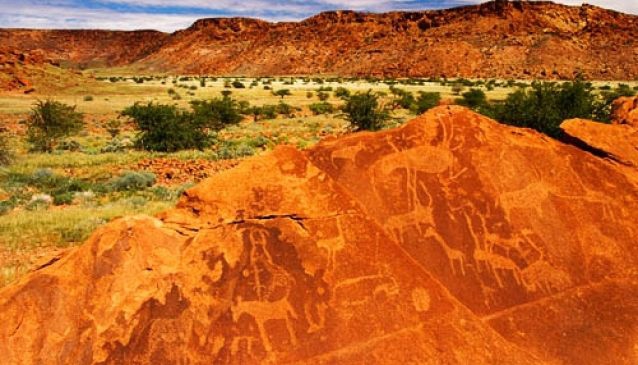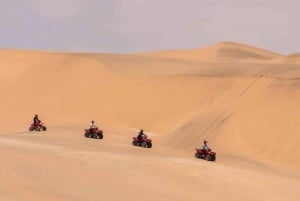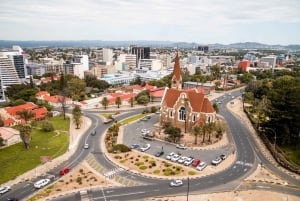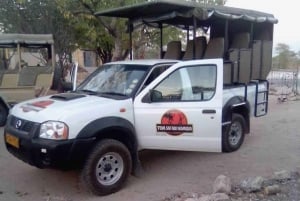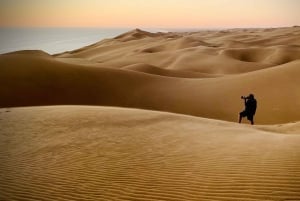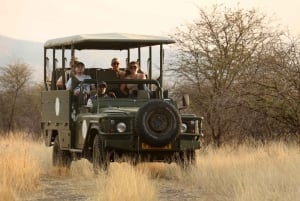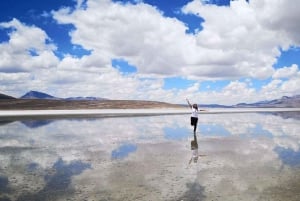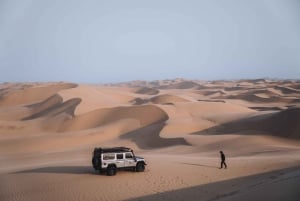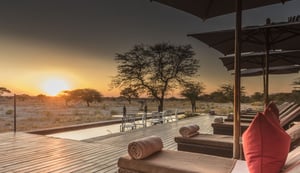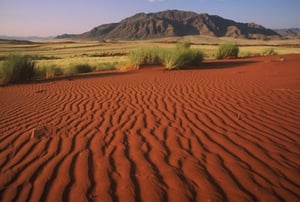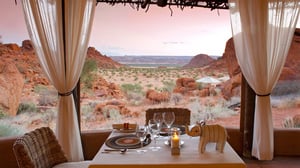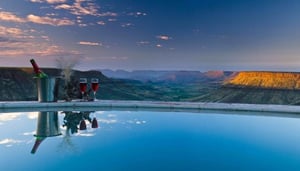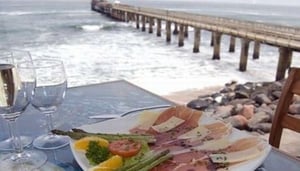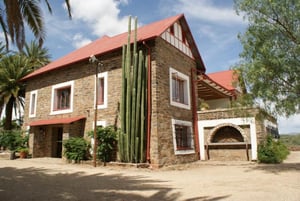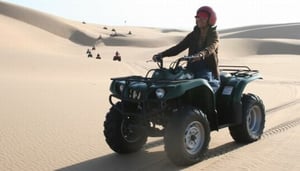Twyfelfontein
Twyfelfontein: Namibia’s Open-Air Rock Art Museum
Book Top Experiences and Tours in Namibia:
If youʻre booking your trip to Namibia last minute, we have you covered. Below are some of the top tours and experiences!- Swakopmund: Desert Dunes Quad Biking with Optional Sandboard
- Walvis Bay: Marine Big 5 Luxury Catamaran Tour
- Windhoek: City and Township Tour
- Etosha National Park: Full or Half-Day Game Drive
- Walvis Bay: Sandwich Harbour Sunset Tour
The Fascinating History of Twyfelfontein
Twyfelfontein, meaning “Doubtful Fountain”, was named by a European settler in the 1940s who was unsure whether the local spring could provide enough water year-round. However, long before European settlers arrived, San (Bushmen) hunter-gatherers and later Khoikhoi pastoralists inhabited this region, leaving behind thousands of petroglyphs (rock engravings) and paintings that tell stories of their spiritual beliefs, hunting rituals, and interactions with nature.
The site contains over 2,500 rock engravings, making it one of the most significant concentrations of prehistoric rock art in Africa. The engravings depict:
- Wildlife such as giraffes, elephants, rhinos, and lions
- Hunting scenes, including human figures and animal tracks
- Abstract symbols and spiritual representations
Visitors to Twyfelfontein can explore the site through guided walking tours, which offer deep insights into the meaning and significance of the engravings. Some of the most famous rock art panels include:
- The Lion Man – A mystical engraving of a lion with an elongated tail ending in a five-toed footprint, believed to be a spiritual symbol.
- The Dancing Kudu – A scene that suggests ritual dances and possibly shamanistic practices.
- The Waterhole Panel – A map-like engraving that may have been used to teach hunting techniques and animal behavior.
Twyfelfontein is not just a historical treasure; it is also surrounded by breathtaking natural landscapes and geological wonders.
1. Organ Pipes
Located near Twyfelfontein, the Organ Pipes are a stunning rock formation of vertical dolerite columns that resemble a church organ. These formations were created over 120 million years ago due to volcanic activity and erosion.
2. Burnt Mountain
At sunrise and sunset, the Burnt Mountain glows with deep shades of red, purple, and black. This unusual landscape results from volcanic rock oxidation, giving it a burnt appearance.
3. Petrified Forest
A short drive from Twyfelfontein, the Petrified Forest is home to massive fossilized tree trunks, some over 200 million years old. These ancient trees were buried by sediments and later transformed into stone through a process called permineralization.
Wildlife and Nature Experiences
Despite its arid conditions, Twyfelfontein is home to a variety of desert-adapted wildlife. Visitors might encounter:
- Desert-Adapted Elephants – These unique elephants have evolved to survive in the harsh desert, roaming between ephemeral rivers in search of food and water.
- Oryx and Springbok – Common antelope species in the region, known for their resilience in dry environments.
- Giraffes and Zebras – Often seen along the dry riverbeds and plains.
- Birdlife – Including raptors like eagles and falcons soaring above the rocky terrain.
There are plenty of activities to enjoy in and around Twyfelfontein, making it a diverse destination for travelers.
1. Guided Rock Art Tours
Learn about the meaning and significance of the petroglyphs with knowledgeable guides who share insights into the spiritual and hunting traditions of early inhabitants.
2. Scenic Nature Drives
Explore the Huab River Valley and surrounding areas on a guided 4x4 game drive, searching for desert-adapted elephants and other wildlife.
3. Photography Expeditions
The landscape of Twyfelfontein offers incredible photography opportunities, from glowing rock formations at sunset to ancient petroglyphs under the African sky.
4. Cultural Encounters with the Damara People
Visit the Damara Living Museum, where you can witness traditional Damara culture, including fire-making, medicinal plant use, and ancient storytelling.
Accommodation Options in Twyfelfontein
Whether you seek luxury lodges, eco-friendly camps, or budget-friendly stays, Twyfelfontein offers a variety of accommodations.
Luxury and Mid-Range Lodges
- Twyfelfontein Adventure Camp – A stylish tented camp offering comfort and proximity to the rock engravings.
- Mowani Mountain Camp – A high-end lodge nestled among boulders, offering breathtaking views and luxury accommodation.
- Doro Nawas Lodge – A scenic lodge with open-air rooms allowing guests to sleep under the stars.
- Aba-Huab Camp – A rustic campsite near the Huab River, ideal for travelers seeking an affordable stay.
- Twyfelfontein Country Lodge – A comfortable, mid-range lodge with stunning views and guided tour options.
Twyfelfontein can be visited year-round, but different seasons offer distinct experiences:
- May to October (Dry Season) – The best time for wildlife spotting and outdoor activities, with cooler temperatures and clear skies.
- November to April (Wet Season) – Occasional rains bring lush greenery to the region, attracting more birdlife and providing a different scenic beauty.
Conclusion
Twyfelfontein is a living museum of ancient art, a testament to Namibia’s rich cultural and natural heritage. Whether exploring the enigmatic petroglyphs, marveling at the geological wonders, encountering desert-adapted wildlife, or immersing in Damara culture, visitors to Twyfelfontein embark on a journey through time. As one of Namibia’s most unique and awe-inspiring destinations, Twyfelfontein is a place where history, nature, and adventure come together in perfect harmony.


